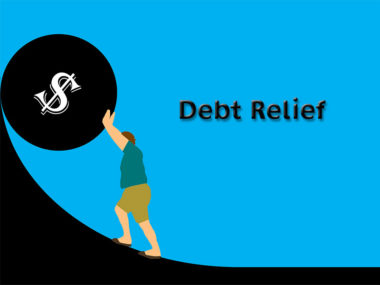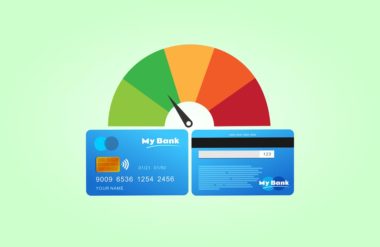When a lender or other institution takes a negative action against you based on your credit report, you’ll receive an adverse action notice. You could receive this notice if:
- You’re denied work.
- You’re denied an insurance policy.
- Your interest rate increases.
- You’re denied a credit card or loan.
- Your credit limit is reduced.
The notice may come by mail, email, or phone. While it’s disappointing and frustrating to be denied a credit card or loan based on your credit, receiving an adverse action notice is important and helpful.
The notice identifies the items on your credit report that led to the denial and the actions you can start taking to resolve them. Under the Fair Credit Reporting Act, a lender or other institution is legally obligated to provide this information to consumers through an adverse action notice.
A summary of the Equal Credit Opportunity Act is also included in your adverse action notice. This legislation prohibits a lender or institution from denying you credit or another opportunity based on your race, religion, gender, or any other discriminatory factor.
Finding out more about an adverse action notice helps ensure you understand the reason for your denial. Learning how to use this notice as a tool to improve your creditworthiness is the key to ensuring you qualify for future financial opportunities.
Table of Contents
What Is an “Adverse Action”?
There are many actions a lender or institution may take that are considered “adverse actions.” However, when it comes to credit card companies, the adverse action taken against you will generally fall into one of three different categories: a credit denial, an adverse approval, or a negative change in terms.
Denial of Credit
Your credit score and report determines whether you’re approved for credit. If you’re not approved for a new credit card or account with an issuer, your adverse action notice provides a reason for this denial. Reasons vary but may include:
- A lack of credit history.
- A low credit score.
- Negative credit history with past lenders.
- No verification of identity or income.
- Negative reported items, such as a bankruptcy.
- Bad financial habits related to credit cards.
- An application that isn’t complete.
Adverse Approval
An adverse approval isn’t a denial of credit with a credit card company. However, it means there was a negative item on your credit report that caused the company to change the credit card terms you qualify for. With an adverse approval, you’re offered credit but the terms may include:
- A lower credit limit.
- A higher interest rate.
- An increased annual fee.
With an adverse approval, you may also be denied special offers, such as an introductory rate.
Negative Change in Terms
Even after you’re approved for a credit card, the card issuer may create a negative change in terms. This could happen if your credit score decreases substantially or negative items appear on your report.
The issuer may increase your interest rate over time due to changes on your credit report. If your credit score drops substantially, you’re late on a payment, or your credit card balance reaches its limit, the card issuer may impose an increased penalty annual percentage rate (APR) on your card balance until you’re back in good standing.
Information Included in Adverse Action Notices
An adverse action notice is an informative document that helps you figure out why a lender took a negative action against you and what you can do about it. To achieve this goal, the lender is required to include specific pieces of information in the notice, including the following:
- Your current credit score.
- Reason codes that explain the factors that affect your credit score.
- The reason the lender took the adverse action.
- Information on the credit bureau that supplied the report.
- Ways you can dispute the action taken against you.
- Information on how to obtain a free copy of your credit report.
What to Do After Getting an Adverse Action Notice
If you agree with the items listed on your adverse action notice, you aren’t required to take any action once you receive the document. You also have the choice to dispute items if you feel they were reported erroneously.
When you find out why an adverse action was taken against you, it’s beneficial to identify the negative items on your credit report and create a plan of action to fix these items. Following the proper steps to improve your report and credit score will lead to broader financial opportunities in the future.
Determine the Reason
Use the reason codes provided in the adverse action notice to determine the reason this action was taken against you. These reason codes allow you to pinpoint the negative items on your credit report that affected the lender’s decision. Identify the source of the negative items, such as the credit bureau, and review your information to ensure it’s accurate.
Find Ways to Improve
If your information is correct, it’s time to focus on improving your credit report and financial situation. Analyze the specific reasons for an adverse action in the notice, such as a low credit score, and create a plan of action to make you a more appealing borrower.
Increase your credit score by lowering your debt and paying your bills on time. Look into the negative items on your report and ensure they’ve been reported properly and should still show up on your history. If not, you may need to dispute these items with the credit bureau or creditor that reported them.
Repair Your Credit
If you need to repair your credit to increase your creditworthiness, it’s important to be patient with the process. You’ll need to display healthy financial habits, such as paying your bills on time and paying down debt, for a long period of time before you begin to see improvements. By developing good credit card habits, you can get yourself out of debt and prove to creditors that you’re a responsible borrower.
Work With a Different Lender
Some lenders have strict qualifications for borrowers but others may be more lenient. If you’re denied a credit card or a bank closes your account due to your credit history, you may be able to find another institution you qualify with.
Look into different lenders or banks and review their eligibility requirements for the products or accounts you want. If you can find a lender that you qualify with now, it eliminates the need to wait to apply for a loan or credit card until you can improve your credit score.
Apply for a Different Product
If you didn’t qualify for a loan or credit card with a lender, there may be other products available with less strict eligibility guidelines. Review the lender’s additional options and see if there’s another product better suited for your current credit score that meets your borrowing needs.
While receiving an adverse action notice is disappointing, this document is helpful for improving your creditworthiness and credit history. When you identify the reasons a lender took an adverse action against you, it’s easier to create a plan of action to improve your credit score.
Image Source: https://depositphotos.com/





